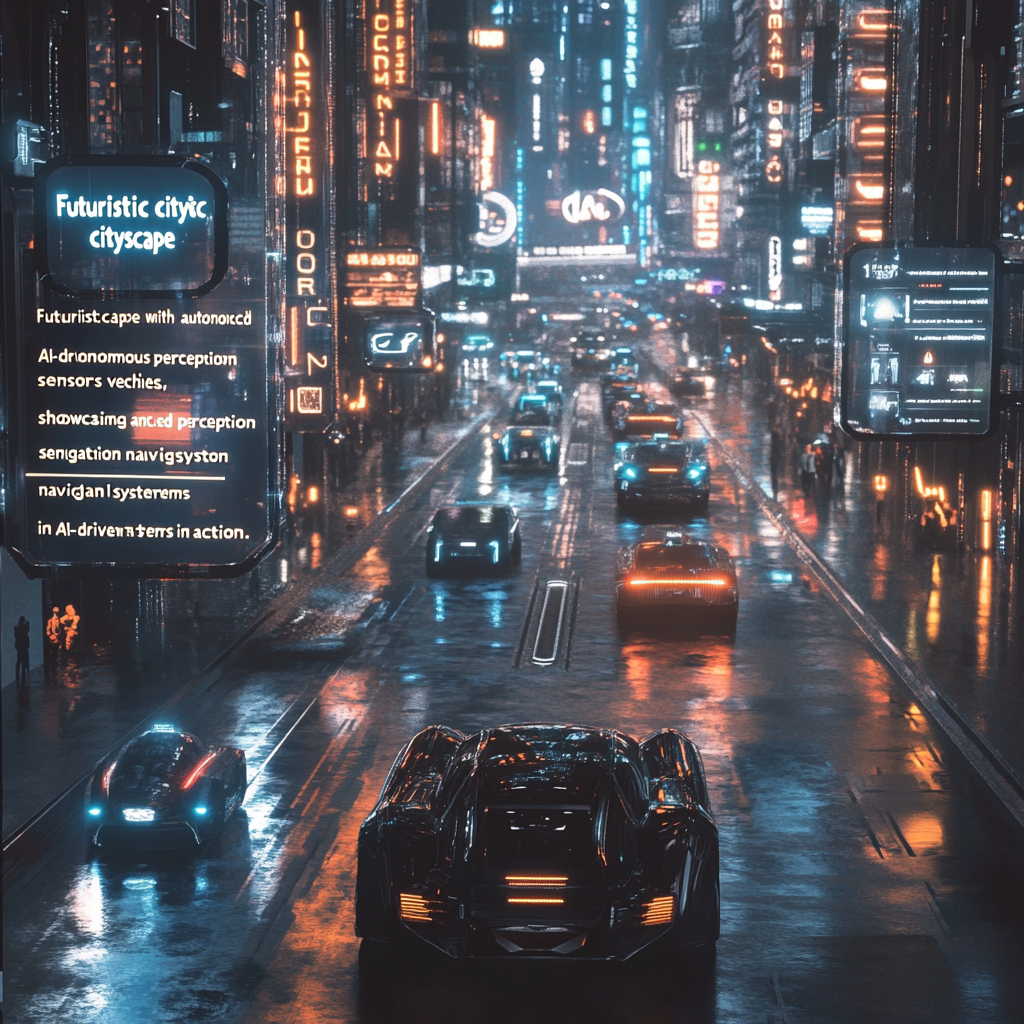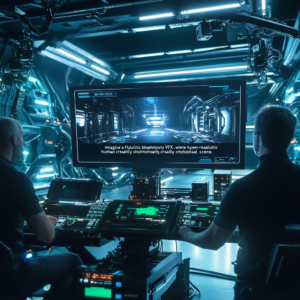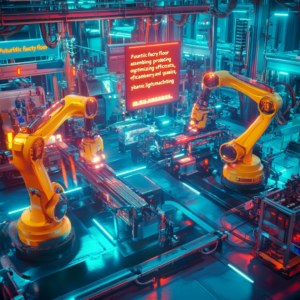
“Enhanced Perception: Boosting Autonomous Vehicle Vision”
Revolutionizing Autonomous Vehicles: A Journey Through Innovation and Ingenuity
Ah, autonomous vehicles—those wondrous machines that promise to whisk us away into a magical future of transportation. Every time I hear about them, my daydreams take me to a world where a car becomes your best friend, navigating the labyrinthine streets without a hint of a bump or a misstep (imagine your car not screeching your favorite playlist at full volume while it absentmindedly merges into the wrong lane—delightful!). However, as romantic as this picture may be, the road to truly autonomous vehicles is littered with challenges and, of course, innovations that will save the day.
Now, let's get this straight: autonomous vehicles are like shiny toys for technophiles and ordinary folks alike. While we’ve seen leaps and bounds in their design, one of the persistent puzzles has been how these vehicles figure out their surroundings—after all, it's not enough to just roll on four wheels and hope for the best!
The Challenge of Perception in Autonomous Vehicles
At the heart of the autonomous driving dilemma lies perception. Picture this: you’re cruising along a bustling city street, and suddenly, a skateboarder zips past—how the heck does your car spot that and judge whether to brake, accelerate, or perform a pirouette? The answer lies in a stew of sensors. Vehicles rely on LiDAR (Light Detection and Ranging), cameras, and even radar to create a snapshot of the world around them. It’s a technological symphony, but, much like an orchestra can hit a bum note, the cars face their fair share of dissonance too.
Despite these advancements, challenges abound. Among the tricky scenarios for these wheeled wonders are detecting minute objects, navigating convoluted environments, and tackling various lighting conditions. Picture a foggy day where all you can see is a moist blur, and your sensor’s got to make decisions—stressful, right?
Meet the Game-Changer: Multi-View Attentive Contextualization (MvACon)
And here comes a hero clad in an invisible cape! Researchers at NC State University have introduced a trailblazing technique called Multi-View Attentive Contextualization (or MvACon, if you're feeling breezy). Imagine giving your current AI-powered vision system a set of magic glasses that allow it to understand depth and distance while maintaining that sleek two-dimensional look. Ta-da!
So, how does this sorcery work? Think of it as a nifty plugin for those existing vision transformer AI programs we often hear about. Here's where it shines: rather than demanding a buffet of additional camera data, it milk the existing data for all it's worth. Here’s a quick rundown:
-
Better 3D Mapping: MvACon isn't shy about flexing its muscles; it boosts the performance of vision transformers to spot objects more accurately, tell their speed, and understand their orientation. It's like giving your car a pair of super-spectacles!
-
Heightened Object Detection: Ever tried to spot a squirrel darting across the street? Well, autonomous vehicles now have a better chance at it. This technique significantly beefs up their ability to detect little objects—even at a distance. A game-changer when it comes to traversing the bustling avenues of urban landscapes.
-
Real-World Testing: Forget abstract theories; the MvACon has been put to test in the wild. When researchers teamed it up with three leading vision transformers, the improvements were staggering—especially concerning object detection and speed estimation.
A Toast to LiDAR Technology
LiDAR might sound like a character from a sci-fi novel, but it’s actually a cornerstone in the sensor toolkit for self-driving cars. Why, you ask? Here’s the lowdown of how LiDAR is strutting its stuff in the streets!
-
Solid-State LiDAR: Picture LiDAR as a superhero gaining new powers. The advent of solid-state LiDAR systems allows detection of objects over 300 meters away. That’s like spotting a deer before it decides to cross the road!
-
High Resolution, Fast Frame Rates: Today's modern LiDAR systems deliver exquisite detail in real time. When everything matters—from classifying fast-moving cars to understanding stop signs in a flash—this technology is proving invaluable.
-
The AI Connection: It’s like peanut butter and jelly. When AI meshes with LiDAR data, we get a synthesis that predicts pedestrian pathways and vehicle behaviors. This is what makes our brave self-driving vehicular friends capable of keeping us safe on the roads.
The Essential Sensor Suite of Autonomous Vehicles
Now let’s take a peek into the magic that happens under the hood of an autonomous vehicle, shall we? Waymo, one of the market leaders in this sphere, showcases an impressive collection of sensors:
-
LiDAR: Crafting a full 3D picture of the world as laser pulses dance in all directions, determined to return with accurate reflections from surrounding objects.
-
Cameras: Equipped with superb dynamic range and thermal stability, these cameras give a panoramic view that embraces both sunny afternoons and moody twilight.
-
Radar: With its refined millimeter wave frequencies, radar holds the secrets of distance and speed, true even when Mother Nature throws her tantrums in the form of rain or snow.
- Onboard Computer: It’s the engine that processes the symphony of data collected from the sensors, empowering the vehicle to plot safe paths in real time. This computer is no mere lapdog; it’s an orchestra conductor guiding the chaos of navigation.
The Road Ahead: Untangling the Challenges
Ah, sweet progress. While we are witnessing a renaissance in automotive technology, the hurdles are far from trivial.
-
Weather Woes: Give autonomous vehicles snow, rain, or fog, and you'll see their confidence take a nosedive. These conditions cloud sensor performance and decision-making like a dreary day clouding our mood.
-
Complex Scenarios: The unpredictable nature of human-driven vehicles, coupled with the infinite complexity of roadways, poses daunting challenges. The cars must be trained extensively to navigate these chaotic environments, lest they find themselves in a sticky situation.
Looking to the Future
As researchers venture into uncharted territories, they're not twiddling their thumbs—they have plans! They want to look into the intricate interaction effects at various intersections. How does one particular setup affect travel time or emissions? It’s a brain-teaser worth pondering.
Also, there’s the pressing question of coexistence. How can autonomous and human-driven vehicles share the road? Will we see a future where speed limits slow down for the sake of safety? One can only imagine.
In Conclusion
There you have it! The fantastic world of autonomous vehicles captivates us while continually striving for improvement. Technologies like Multi-View Attentive Contextualization, in concert with advances in LiDAR and extensive sensor suites, are paving the way for a future where self-driving vehicles won’t need us to hold their hands. Embrace this change and keep your ears perked because we’re racing ever closer to that dream.
Want to stay up to date with the latest news on neural networks and automation? Subscribe to our Telegram channel: @channel_neirotoken

